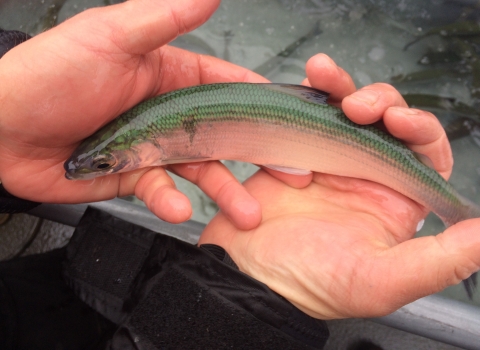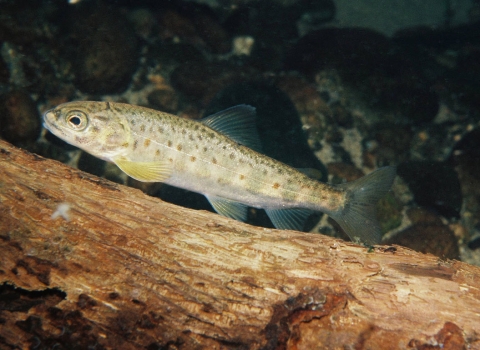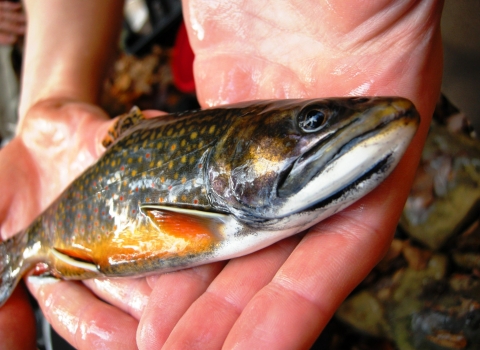Projects and Research
The cisco (Coregonus artedi) and the bloater (Coregonus hoyi) both played critical roles in the trophic dynamics of the Great Lakes. They were the primary native prey species for top predator fish such as the lake trout. By the 1950’s, however, overfishing and competition with non-native, plankton-eating prey fish (alewife) caused the collapse of these native prey species, and subsequently...
The Northeast Fishery Center is helping the Great Lakes Fishery Commission restore lake trout by assessing the genetics of lake trout and identifying which strains may be naturally reproducing in the Niagara River and other areas of Lake Ontario. Using genetic markers to identify species from samples of fish eggs and to identify the strain of origin that was contributing to natural...
In collaboration with the Craig Brook and Green Lake national fish hatcheries, the Northeast Fishery Center developed conservation genetic management plans for breeding and raising Atlantic salmon in the hatchery. These plans are helping the United States recover distinct populations of endangered Atlantic salmon, which are only found in Maine. The genetics of incoming adult fish and...
Environmental DNA (eDNA) analysis is rapidly growing in its application for monitoring invasive species range expansions, and for helping to locate rare and endangered native species. The Center is working on the development and application of these methods for detecting DNA of aquatic species in the water. We have also developed genetic markers for several native species such as the...
Brook trout are either extirpated or greatly reduced in many rivers and streams throughout the eastern United States. We assessed genetic diversity in brook trout populations in northwestern Pennsylvania and western New York. As expected, we found diversity correlated to habitat connectivity between populations, and population isolation. We also evaluated and found no gene introgression with...
We are helping states locate and assess lake sturgeon populations, which were nearly eliminated from the Great Lakes basin in the early 1900’s due to over fishing and habitat degradation. Biologists with the Northeast Fishery Center and the Lower Great Lake Fish and Wildlife Conservation Office are conducting multi-faceted research on lake sturgeon in Lake Erie, the Niagara River, and...
Northeast Fishery Center staff represent the U.S. Fish and Wildlife Service (Service) interests on management boards, and species stock assessment and technical committees, that support the Atlantic States Marine Fisheries Commission management of alewife and blueback herring, American eel, horseshoe crab, striped bass, and American and hickory shad. The commission is a cooperative...






